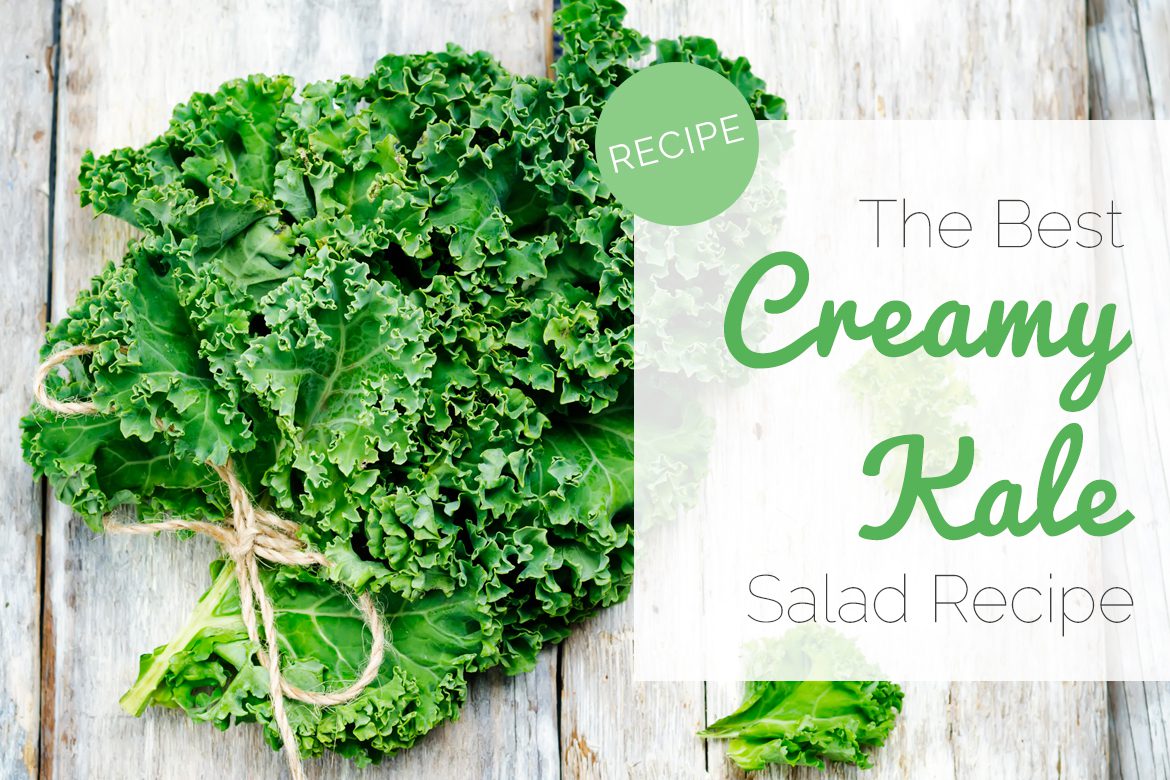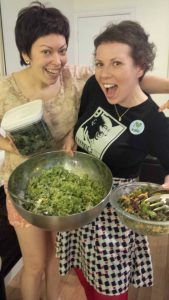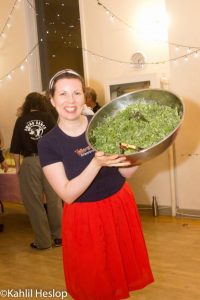
 If you’re looking for the best kale salad, this is it! I became hooked on kale salad when I first discovered this recipe at the Whole Foods near a dance event in Washington, DC. It was so good, I ate it for 3 days in a row.
If you’re looking for the best kale salad, this is it! I became hooked on kale salad when I first discovered this recipe at the Whole Foods near a dance event in Washington, DC. It was so good, I ate it for 3 days in a row.
How this salad got its name
Who’s Kale?
The Kale Recipe everyone’s talking about – Who’s Kale?
 1 bunch raw curly kale, washed, de-stemmed and dried
1 bunch raw curly kale, washed, de-stemmed and dried- 2 Tablespoons tahini
- 4 Tablespoons apple cider vinegar
- 2 Tablespoons coconut aminos, tamari, or salt to taste (I actually use soy-free miso to taste lately)
- 6 Tablespoons nutritional yeast (or more – yum!)
- 2 teaspoons minced garlic (1 – 2 cloves of garlic, when I’m lazy I use garlic powder)
- 1/2 teaspoon of dijon mustard (optional)
- a couple of tablespoons of water to thin it out to the thickness of your choice
- Wash, dry and remove the stems from your kale. Rip into bite size pieces and place in a large bowl.
- Puree all ingredients (except kale) in a blender or food processor to blend the dressing.
- You can make this dressing thinner by adding more water in which case you can pour it directly on to your kale and massage it in. However, I’ve since changed to keeping my dressing thick with only a couple of tablespoons of water so it’s more like a paste, and then adding my kale to it and massaging it in that way. It gives more flavour punch and sticks to the leaves better.
- Eat it right away, or let the salad sit in the fridge for an hour or so to marinate. You can skip this step if you need to eat right away, but allowing some time to marinate will wilt the kale a bit and make it a little softer – particularly for those who are skeptical about eating raw kale.
https://www.instagram.com/p/BX821OKgPkT/?taken-by=mandigould
https://www.instagram.com/p/BHsHSrpgj97/?taken-by=mandigould
Wikipedia has this to say about kale:
Kale or borecole (Brassica oleracea Acephala Group) is a vegetable with green or purple leaves, in which the central leaves do not form a head. It is considered to be closer to wild cabbagethan most domesticated forms. The species Brassica oleracea contains a wide array of vegetables, including broccoli, cauliflower, collard greens, and brussels sprouts. The cultivar groupAcephala also includes spring greens and collard greens, which are extremely similar genetically.
Want to know more about the various varieties of kale? Check out ilovekale.com.